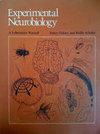额前灰质体积对重度抑郁症患者自杀未遂的间接影响
IF 1.8
4区 医学
Q3 MEDICINE, RESEARCH & EXPERIMENTAL
引用次数: 1
摘要
特质冲动是已知的自杀风险因素,前额叶皮层在冲动及其调节中起着关键作用。然而,特质冲动性、神经基础和自杀之间的关系一直不一致。因此,本研究旨在探讨冲动与其结构相关因素(前额叶灰质体积)、自杀意念和实际自杀企图之间的关系。共有87名重度抑郁症患者参与了这项研究,并基于感兴趣区域掩码从T1图像中提取了前额叶区域的灰质体积。基于相关性分析选择中介模型的变量,并测试其预测自杀企图的能力,以冲动和自杀意念为中介变量,灰质体积为自变量。自杀意念与左背外侧前额叶皮层和右背内侧前额叶皮层之间存在显著相关性。双中介模型揭示了两个区域的灰质体积与由运动冲动和自杀意念介导的自杀企图之间的显著间接关系。还讨论了灰质体积与自杀之间的反直觉正相关关系。本文章由计算机程序翻译,如有差异,请以英文原文为准。
The Indirect Effect of Prefrontal Gray Matter Volume on Suicide Attempts among Individuals with Major Depressive Disorder
Trait impulsivity is a known risk factor for suicidality, and the prefrontal cortex plays a key role in impulsivity and its regulation. However, the relationship between trait impulsivity, neural basis, and suicidality has been inconsistent. Therefore, this study aimed to explore the relationship between impulsivity and its structural correlates (prefrontal gray matter volume), suicidal ideation, and actual suicide attempts. A total of 87 individuals with major depressive disorder participated in study, and the gray matter volume of the prefrontal regions was extracted from T1 images based on region of interest masks. The variables for the mediation models were selected based on correlation analysis and tested for their ability to predict suicide attempts, with impulsivity and suicidal ideation as the mediation variables and gray matter volume as the independent variable. A significant correlation was observed between suicidal ideation and the left dorsolateral prefrontal cortex and right dorsomedial prefrontal cortex. The dual-mediation model revealed a significant indirect relationship between gray matter volume in both regions and suicide attempts mediated by motor impulsivity and suicidal ideation. The counterintuitive positive relationship between gray matter volume and suicidality was also discussed.
求助全文
通过发布文献求助,成功后即可免费获取论文全文。
去求助
来源期刊

Experimental Neurobiology
Neuroscience-Cellular and Molecular Neuroscience
CiteScore
4.30
自引率
4.20%
发文量
29
期刊介绍:
Experimental Neurobiology is an international forum for interdisciplinary investigations of the nervous system. The journal aims to publish papers that present novel observations in all fields of neuroscience, encompassing cellular & molecular neuroscience, development/differentiation/plasticity, neurobiology of disease, systems/cognitive/behavioral neuroscience, drug development & industrial application, brain-machine interface, methodologies/tools, and clinical neuroscience. It should be of interest to a broad scientific audience working on the biochemical, molecular biological, cell biological, pharmacological, physiological, psychophysical, clinical, anatomical, cognitive, and biotechnological aspects of neuroscience. The journal publishes both original research articles and review articles. Experimental Neurobiology is an open access, peer-reviewed online journal. The journal is published jointly by The Korean Society for Brain and Neural Sciences & The Korean Society for Neurodegenerative Disease.
 求助内容:
求助内容: 应助结果提醒方式:
应助结果提醒方式:


